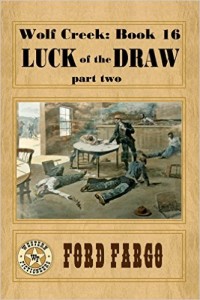I’ve been invited to create a new character for the Western Fictioneers – something for the shared world of Wolf Creek. This is an 1872 town on the Kansas prairie, with characters created by a variety of authors. We’ve just published Book 16 and my new character will make his appearance in the next anthology.
I thought I’d share a few tips on creating a new character, as I go through the process:
- Start with the basics – first, you need to decide what gender, race and age your character is going to be. This may change later, but start with the basic information in mind so you have that general image.
- Add details – decide how your character looks (at least the bare minimum of hair & eye color, approximate size, and anything unusual) and how they dress. Imagine the outer package for your character.
- Pick a setting – where does your character come from? Where do they live and work? What do they do and how well do they do it? See your character in their natural habitat before you begin your story.
- Fill out a chart (or two) – find one (or more) of those character charts … and you can’t go wrong with mine – just use the drop-down menu above, under Writer’s Toolkit! Fill out the chart(s) to learn about your character’s personality so you’ll know how they will act in your story.
- Christen your child – once you can see the character clearly in your mind, it’s time to pick a name. By this time, you’ll know the sort of name that fits the character best, whether it’s a traditional name to match their ethnicity, a nickname, or something that describes their personality. My character chart also has a few links at the bottom to help you name characters.
And that’s how I came up with my new character, who’s going to be a sort of Junior Chance – young teens, mixed race, very intelligent, and a budding criminal mastermind. He’s going to serve as a connection between the different parts of Wolf Creek, running messages and selling information, performing tasks that may not be quite legal, and generally being a go-between when a citizen doesn’t want to (or can’t afford to) be seen in a certain part of town.

